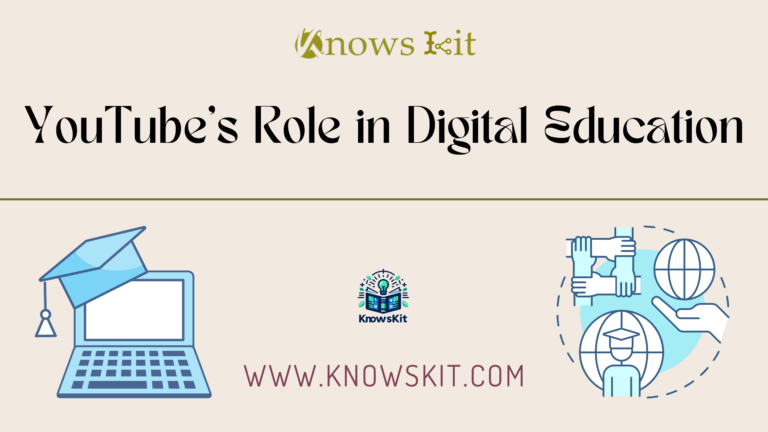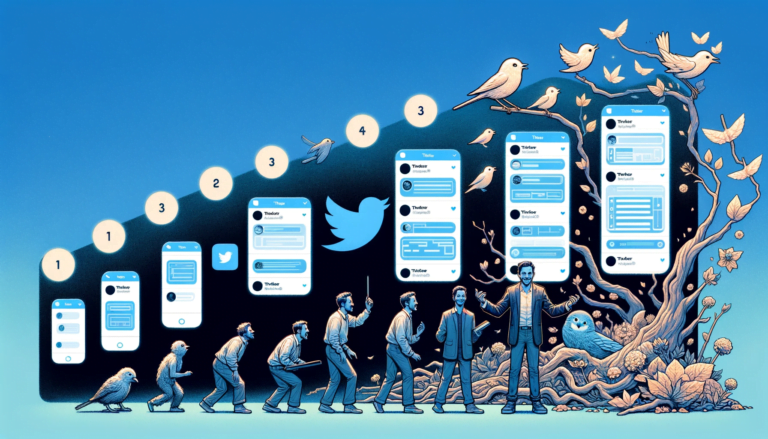WhatsApp, the ubiquitous messaging app, has revolutionized the way we communicate. From its humble beginnings to becoming a household name, WhatsApp’s journey is remarkable. This blog post delves deep into the evolution and history of WhatsApp, offering insights into how it transformed the digital communication landscape.
The Birth of WhatsApp

The Founding Vision of WhatsApp
Jan Koum and Brian Acton, former employees of Yahoo, embarked on a mission in 2009 to create an app that would not only change the way we message but also prioritize user privacy and ease of use. Their vision was simple yet powerful – a messaging app that works seamlessly across different platforms, ensuring real-time communication without the clutter of ads.
Original Features and User Interface Initially, WhatsApp offered a straightforward user interface focused on simplicity and functionality. The app’s original features included:
- Instant messaging with real-time delivery.
- A contacts list is automatically populated from the user’s phone.
- No advertisements, ensuring an uncluttered experience.
The Early Challenges In the beginning, WhatsApp faced several challenges. Funding was limited, and the technical hurdles of developing a cross-platform app were significant. Koum and Acton, driven by their vision, overcame these obstacles. They relied on their savings and focused on building a robust and user-friendly platform.
WhatsApp’s Growth Trajectory

Milestones in User Growth
WhatsApp’s user base grew exponentially, a testament to its appeal and functionality. Here’s a timeline table showcasing its remarkable growth:
| Year | User Milestones |
|---|---|
| 2009 | Launch of WhatsApp |
| 2011 | 10 million users |
| 2013 | 200 million users |
| 2016 | 1 billion users |
| 2020 | 2 billion users |
Key Updates and Feature Additions

Over the years, WhatsApp has introduced several updates to enhance user experience, including:
- End-to-End Encryption: Ensuring secure and private conversations.
- Voice and Video Calling: Facilitating more personal and direct communication.
- WhatsApp Status: Allowing users to share updates that disappear after 24 hours.
- Group Chats and Video Calls: Making it easier to stay connected with friends and family.
Expanding Global Reach
WhatsApp’s adoption has been widespread, transcending cultural and geographical boundaries. It has become trendy in countries like India, Brazil, and across Europe, adapting to various languages and network conditions.
The Facebook Acquisition

Behind the Acquisition
In 2014, Facebook acquired WhatsApp for an astonishing $19 billion. Mark Zuckerberg, Facebook’s CEO, saw WhatsApp’s potential to connect people across the globe. He stated, “WhatsApp is on a path to connect 1 billion people. The services that reach that milestone are all incredibly valuable.”
Changes Post-Acquisition
Post-acquisition, WhatsApp underwent several changes:
- Introduction of new features like WhatsApp Business.
- Adjustments in privacy policies, sparking debates and concerns.
User and Market Reactions
The acquisition led to mixed reactions. Users expressed privacy concerns, while market experts analyzed the strategic move’s implications. However, WhatsApp continued to grow, proving its resilience and user loyalty.
Technological Innovations in WhatsApp

Advancements in Messaging Technology
WhatsApp has continuously evolved, embracing cutting-edge technology to enhance user experience and maintain its position as a leading messaging platform. Here’s an expanded look at some of the key technological innovations in WhatsApp:
End-to-End Encryption
- Introduction and Implementation: In 2016, WhatsApp implemented end-to-end encryption for all forms of communication on the app, including messages, calls, and media sharing. This feature was developed in collaboration with Open Whisper Systems, using the Signal Protocol.
- User Privacy and Security: This encryption ensures that only the sender and the receiver can access the content of the messages, making it impossible for even WhatsApp to read them. This was a significant step in bolstering user trust, especially in an era where digital privacy is a major concern.
- Impact on the Industry: WhatsApp’s move to implement end-to-end encryption set a new standard in the messaging app industry, prompting many other platforms to prioritize similar security measures.
Voice and Video Calling

- Launch and Evolution: WhatsApp introduced voice calling in 2015 and video calling in 2016, transforming it from a text-based app to a more comprehensive communication tool. These features were rolled out globally, offering high-quality voice and video communication, even in low-bandwidth areas.
- Technological Challenges and Solutions: Implementing these features presented technical challenges, such as maintaining call quality and connection stability. WhatsApp addressed these issues by optimizing data usage and enhancing call reliability, even on 2G networks.
- Enhancing Personal and Professional Communication: The addition of voice and video calling made WhatsApp an essential tool not just for personal communication but also for professional contexts, such as remote meetings and interviews.
WhatsApp Business
- Introduction and Purpose: Launched in 2018, WhatsApp Business was designed to help small and large businesses communicate more effectively with their customers. This separate app offers unique features tailored for business use, such as automated messages, catalogs, and analytics.
- Innovative Features for Businesses: Businesses can create profiles with essential information like address, business hours, and descriptions. Automated responses and greeting messages streamline customer interaction, while labels and quick replies make managing conversations more efficient.
- Impact on the Business Ecosystem: WhatsApp Business has revolutionized how businesses engage with customers, offering a direct and personalized communication channel. It has become particularly popular in regions where WhatsApp is the primary communication tool.
AI and Chatbots
- Integration and Applications: In recent years, WhatsApp has started integrating AI and chatbots, particularly for business users. These technologies enable automated customer service, instant responses to common inquiries, and personalized shopping experiences.
- Advancements in AI Integration: The integration of AI in WhatsApp allows for smarter chatbots that can understand and respond to a wider range of customer queries. This improves the efficiency and quality of customer service.
- Future Potential: The use of AI in WhatsApp has vast potential, from enhancing user experiences to providing businesses with powerful tools for customer engagement and data analysis.
Future Technological Prospects
- Ongoing Innovations: WhatsApp continues to innovate, with future updates expected to include more advanced AI features, further improvements in encryption and security, and integration with other Facebook-owned platforms.
- Potential Integrations: Looking ahead, WhatsApp may explore integrations with emerging technologies like virtual and augmented reality, offering users new ways to communicate and interact.
Controversies and Challenges

While WhatsApp has enjoyed immense popularity and success, it has not been without its share of controversies and challenges. These issues have tested the platform’s resilience and have had a significant impact on its operations and reputation. Here’s an expanded look at some of the key controversies and challenges faced by WhatsApp:
Privacy Concerns and Legal Battles
- Changes in Privacy Policy: WhatsApp’s updated privacy policy, particularly after its acquisition by Facebook, raised concerns over data-sharing practices. Users and privacy advocates questioned the extent of data being shared with Facebook and other third parties.
- Global Legal Scrutiny: These concerns have led to legal challenges in various countries. Governments and regulatory bodies have scrutinized WhatsApp for potentially violating privacy laws, leading to debates over user data protection and encryption policies.
- User Backlash and Migration to Alternatives: The privacy controversies resulted in a backlash from users, some of whom migrated to alternative messaging apps like Signal and Telegram, which are perceived to have stronger privacy protections.
The Global Impact of Misinformation

- Role in Spreading Misinformation: WhatsApp has been a conduit for the spread of misinformation and fake news, particularly in countries like India and Brazil. Its end-to-end encryption and widespread use have made it a common platform for the unchecked spread of false information.
- Societal and Political Impact: The misinformation spread through WhatsApp has had real-world impacts, including inciting violence and influencing political processes. This has put the platform in a position of responsibility to address these issues.
- Measures to Combat Misinformation: In response, WhatsApp has taken steps like limiting message forwarding and launching awareness campaigns. However, balancing misinformation control with user privacy remains a challenge.
Competing in a Crowded Market
- Rising Competition: The messaging app market has become increasingly crowded, with competitors like Telegram and Signal offering similar or even enhanced features. These apps have capitalized on privacy concerns surrounding WhatsApp to draw in a privacy-conscious user base.
- Innovation and Differentiation: To maintain its market position, WhatsApp needs to continually innovate and differentiate itself. This includes introducing new features, improving security, and enhancing user experience.
- Balancing User Needs with Business Goals: As part of the Facebook family, WhatsApp faces the challenge of balancing its original vision of a simple, ad-free communication platform with the business objectives of its parent company.
Future Challenges
- Adapting to Technological Changes: As technology evolves, WhatsApp must adapt to new trends like augmented reality, 5G, and changing user expectations around privacy and functionality.
- Sustaining User Trust: Maintaining and regaining user trust in the wake of privacy controversies is crucial. This involves transparent communication with users, robust data protection measures, and adherence to global privacy standards.
- Regulatory Compliance: Navigating the complex landscape of global regulations, including data protection laws like GDPR in Europe, is an ongoing challenge. Compliance is essential for operating in different markets and maintaining user trust.
WhatsApp’s Cultural Impact

WhatsApp has not only been a technological phenomenon but also a cultural one, influencing communication norms and becoming a significant aspect of popular culture. Its impact extends beyond the realm of technology, affecting social interactions, business communications, and even language. Here’s a detailed look at the cultural impact of WhatsApp:
Changing Communication Norms
- Influence on Personal Communication: WhatsApp has transformed how people connect with friends and family. It has made international communication more accessible and cost-effective, reducing the barriers of distance. The app’s features like group chats, voice, and video calls have become integral to maintaining personal relationships.
- Impact on Business Communication: WhatsApp has also changed the way businesses communicate with customers and within teams. The introduction of WhatsApp Business and its messaging features have enabled businesses to provide quick and personalized customer service, making it a vital tool for customer engagement.
- Evolution of Language and Messaging Etiquette: The platform has influenced language use, with the proliferation of emojis, voice notes, and shorthand texting becoming commonplace. It has also shaped messaging etiquette, setting new norms for responsiveness and message formatting.
WhatsApp in Popular Culture
- References in Media and Entertainment: WhatsApp’s ubiquity has led to its frequent mention in movies, TV shows, and music, reflecting its role in everyday life. It has become a symbol of modern communication, often used in narratives to depict contemporary social interactions.
- Influence on Art and Literature: Artists and writers have used WhatsApp as a theme or tool in their works, exploring its impact on relationships and society. The app’s influence extends to various forms of art, including digital art, where conversations and experiences through WhatsApp are depicted.
The Future of Communication
- Predictions and Trends: Looking ahead, WhatsApp is expected to continue influencing communication trends. Its potential integration with emerging technologies like augmented reality (AR) and virtual reality (VR) could lead to new forms of interaction, further blurring the lines between physical and digital communication.
- Role in Shaping Social Dynamics: WhatsApp’s group chat feature, in particular, has created new social dynamics, forming communities and networks that transcend traditional boundaries. It has become a tool for organizing events, activism, and even social movements, showcasing its role as a facilitator of collective action.
Societal Impact
- WhatsApp and Education: In the educational sector, WhatsApp has been used as a tool for learning and collaboration, connecting teachers, students, and parents, especially in regions with limited access to traditional educational resources.
- Influence on Mental Health and Well-being: The app’s impact on mental health is a topic of growing interest. While it has facilitated connection, concerns about overuse, addiction, and its role in social isolation have been raised, prompting discussions about digital well-being in the age of constant connectivity.
Global Cultural Exchange
- Facilitating Cross-Cultural Communication: WhatsApp has enabled cross-cultural communication, connecting people across different countries and cultures. It has become a platform for cultural exchange, allowing users to share and learn about diverse customs and traditions.
- Language and Localization: The app’s support for multiple languages and its localization efforts have helped cater to a global audience, respecting and embracing cultural diversity.
The Future of WhatsApp

As WhatsApp continues to dominate the global messaging app market, its future trajectory is a topic of keen interest and speculation. Here’s an in-depth look at the potential developments and directions WhatsApp might take in the coming years:
Upcoming Features and Roadmap
- Enhanced Privacy Controls: In response to growing privacy concerns, WhatsApp is likely to introduce more robust privacy features, allowing users greater control over their data and communication.
- Interactive Business Tools: Building on the success of WhatsApp Business, future updates may include more advanced tools for businesses, such as improved analytics, customer segmentation, and enhanced e-commerce capabilities.
- Integration with Other Platforms: Being part of the Facebook (now Meta) ecosystem, WhatsApp might see deeper integration with other platforms like Facebook and Instagram, offering a more unified communication experience across these apps.
Potential Market Expansions
- Emerging Markets: WhatsApp is expected to continue its expansion in emerging markets, where internet usage is growing rapidly. This includes targeting countries in Africa, Asia, and Latin America, where the app can capitalize on the need for affordable and reliable communication.
- Adapting to Local Needs: Expansion efforts will likely include localizing the app to meet regional languages and cultural nuances, ensuring that the app resonates with a diverse global user base.
Evolving with Technology Trends
- Augmented and Virtual Reality: As AR and VR technologies mature, WhatsApp may integrate these innovations to offer immersive communication experiences. This could include virtual meeting spaces or AR-based features that add a new dimension to messaging.
- Artificial Intelligence and Machine Learning: AI and machine learning are expected to play a bigger role in WhatsApp, potentially in areas like chatbot functionality, spam detection, and personalized user experiences.
Challenges and Opportunities
- Navigating Privacy and Regulation: A significant challenge for WhatsApp will be navigating the complex landscape of global privacy laws and regulations, balancing user privacy with business and security needs.
- Maintaining Market Dominance: As competition in the messaging app market intensifies, WhatsApp will need to continuously innovate to maintain its appeal and user base.
WhatsApp’s Role in the Metaverse

- Integration with the Metaverse Concept: With Meta’s focus on building the metaverse, WhatsApp might become a key player in this new virtual space, offering communication solutions within this digital universe.
- Potential for New Forms of Interaction: In the metaverse, WhatsApp could enable new forms of social interaction and communication, transcending the traditional boundaries of messaging apps.
Long-Term Vision
- Sustainable Growth: WhatsApp’s long-term vision likely includes sustainable growth strategies, focusing on both user acquisition and retention, while also exploring new revenue models that align with user expectations.
- Contributing to Global Connectivity: As part of its mission, WhatsApp is likely to continue efforts to bridge communication gaps worldwide, contributing to global connectivity and digital inclusion.
Conclusion: Whatsapp Evolution History Journey
WhatsApp’s evolution from a simple messaging app to a global communication giant is a testament to its adaptability, innovation, and enduring appeal. Through its journey, WhatsApp has not only changed how we communicate but also how businesses connect with customers and the very fabric of our social interactions. Despite facing challenges and controversies, WhatsApp continues to thrive, driven by its commitment to privacy, user-friendly experience, and constant technological advancements. As we look to the future, WhatsApp’s role in shaping communication norms and integrating with emerging technologies is poised to be as impactful as its storied past.
FAQ: Whatsapp Evolution History Journey
What were the initial challenges faced by WhatsApp’s founders?
Initially, WhatsApp faced funding limitations and technical challenges in creating a cross-platform messaging service. The founders, using their savings and expertise, overcame these by focusing on building a user-friendly and reliable app.
How did WhatsApp’s user interface evolve from its inception to now?
WhatsApp’s user interface has evolved from a basic messaging layout to include features like voice and video calls, Status updates, and a more intuitive, user-friendly design. The app has continually been updated to improve usability and incorporate new functionalities.
What impact did the Facebook acquisition have on WhatsApp’s growth?
The Facebook acquisition in 2014 provided WhatsApp with more resources for growth and development. It allowed for the introduction of new features like WhatsApp Business and increased the app’s global user base, though it also raised privacy concerns.
Can you elaborate on WhatsApp’s key technological advancements?
Key advancements include the introduction of end-to-end encryption for secure communications, voice, and video calling features, the WhatsApp Business platform for customer engagement, and ongoing updates for performance and user experience enhancements.
How did WhatsApp Business transform the app’s usability for companies?
WhatsApp Business transformed the app by providing businesses with tools for effective customer communication, such as automated messages, catalogs, and analytics. It enabled a more personalized and direct interaction between companies and customers.
What are some notable milestones in WhatsApp’s user growth?
Notable milestones include reaching 1 billion users in 2016 and 2 billion in 2020. These milestones signify WhatsApp’s increasing global dominance in the messaging app market.
How has WhatsApp influenced global communication practices?
WhatsApp has made international messaging more accessible and cost-effective, changing how people interact personally and professionally. It has streamlined communication, making it faster and more convenient.
What strategies has WhatsApp employed to compete in the crowded messaging app market?
WhatsApp’s strategies include continual innovation, focusing on user privacy and security, introducing new features like WhatsApp Business and Status updates, and maintaining a simple, ad-free user experience.
In what ways has WhatsApp been involved in the spread and control of misinformation?
WhatsApp has been used to spread misinformation, particularly in countries with high user density. In response, the company implemented measures like limiting message forwarding and introducing campaigns to educate users about digital literacy.
How does WhatsApp’s end-to-end encryption work?
WhatsApp’s end-to-end encryption ensures that only the communicating users can read messages. Each message is secured with a unique lock, and only the recipient has the special key needed to unlock and read the messages.
What legal challenges has WhatsApp faced, especially regarding user privacy?
WhatsApp has faced legal challenges related to data privacy and sharing practices, particularly after updating its privacy policy. These challenges include scrutiny from privacy advocates and governments questioning the extent of data sharing with Facebook.
How does WhatsApp maintain its service quality across different countries and networks?
WhatsApp maintains its service quality by optimizing its app for various network conditions and devices. It constantly updates to ensure efficient performance even in regions with lower bandwidth or older mobile devices.
What future technological integrations can we expect from WhatsApp?
Future technological integrations may include advanced AI features for personalized experiences, further developments in WhatsApp Business, and potential integration with emerging technologies like augmented and virtual reality.
How has WhatsApp’s approach to user privacy evolved over the years?
WhatsApp’s approach to privacy has evolved, particularly post-Facebook acquisition. While the core principle of user privacy remains, the app has made changes to its policy, leading to public debates and a more transparent approach to data handling.
What role does WhatsApp play in modern popular culture?
WhatsApp has a significant role in popular culture, often referenced in films, TV shows, and everyday conversations. It has become a symbol of modern communication, reflecting its widespread use and societal impact.
Can you detail the steps WhatsApp has taken to address the challenge of misinformation?
To address misinformation, WhatsApp has implemented restrictions on message forwarding, introduced labels for forwarded messages, and launched public awareness campaigns. They also collaborate with governments and NGOs to combat misinformation.
What are some challenges WhatsApp faces in maintaining market dominance?
Challenges include navigating privacy concerns, keeping up with technological advancements, competing with other messaging platforms, and adapting to changing user preferences and global communication trends.
How has WhatsApp adapted to different languages and cultural norms?
WhatsApp has adapted to different languages and cultures by offering multi-language support, understanding local communication habits, and ensuring that its features are relevant and accessible to diverse global users.
What is WhatsApp’s potential impact on future communication trends?
WhatsApp’s impact on future communication trends includes further shaping instant messaging norms, influencing business communication strategies, and possibly integrating with next-gen technologies like AI, VR, and AR.
How does WhatsApp balance innovation with user experience?
WhatsApp balances innovation with user experience by introducing new features that are intuitive and enhance communication while maintaining a simple, user-friendly interface and prioritizing user privacy and security.
Read More: Knows Kit







